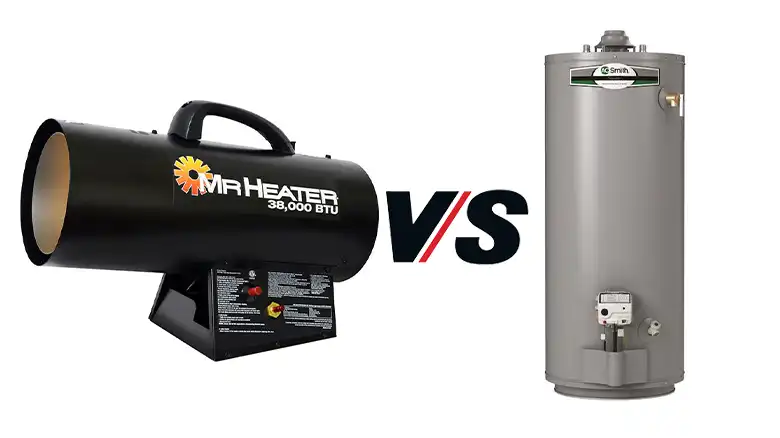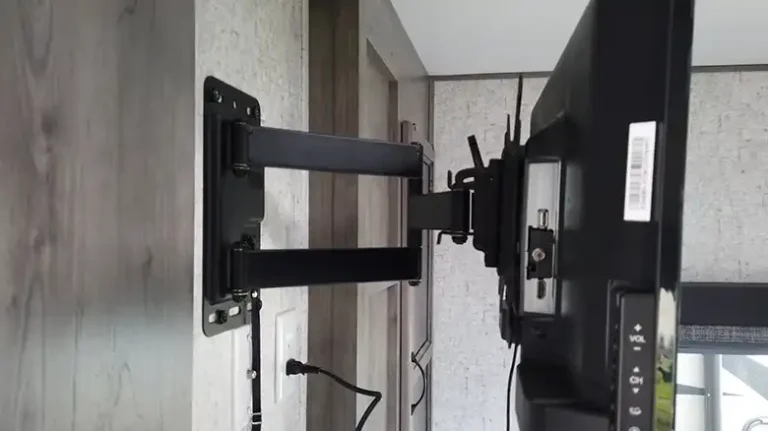38000 BTU vs 40000 BTU Rating in An RV for Heat and Cool
When outfitting an RV, one key specification to understand is BTU, or British Thermal Unit. This measure defines the amount of energy required to heat or cool. Determining the right BTU rating is crucial for powering essential RV appliances like air conditioning units and water heaters that maintain interior temperatures. Typically, higher BTU ratings equate to greater heating or cooling capacity.
RVs contain specialized appliances tailored to minimize space and resource use while off the grid. Units like low-profile air conditioners and tankless water heaters offer convenience in a compact, mobile package. However, being powered by the RV’s own electrical system, these appliances’ capabilities depend directly on available BTU input.
When comparing appliance models—say a 38,000 BTU unit versus a 40,000 BTU version—consider how increased BTU output translates to possible performance gains. Factoring in the added electrical and installation requirements helps determine the ideal BTU rating that best suits your RVing needs.

RV Appliances and their BTU Requirements
Let’s have a closer look at how this measurement applies specifically to heating and cooling appliances found in RVs.
BTU (British Thermal Unit) explained
The standard unit used to measure any appliance’s heat energy output is the BTU, or British Thermal Unit. Specifically, one BTU indicates the amount of energy transfer needed to increase the temperature of one pound of water by 1°F. Knowing an appliance’s BTU rating is crucial for understanding its capacity to change the temperature of the surrounding air or other substance. Higher BTU appliances have greater heating/cooling abilities.
Overview of common RV appliances
Major RV appliances that utilize BTU measures for their heating/cooling effects include types like air conditioners, water heaters that supply hot water for sinks/showers, interior furnaces for heating the living space, refrigerator/freezers for maintaining food storage temperatures and stovetops or ovens for cooking capacity. For an RV to handle all daily needs, proper functioning and right-sizing of these appliances is essential.
The role of BTU in sizing RV appliances
When installing or replacing any heating/cooling appliance in an RV, its BTU output rating directly correlates to available capacity for altering ambient temperatures. Choosing RV appliances like air conditioners, water tanks and furnaces means selecting adequate BTU levels to produce the desired heating or cooling effect for that RV’s interior square footage, climate challenges, and number of occupants. Undersizing leads to insufficient temperatures.
Relationship between BTU, Heating Energy, and Cooling Energy
While the BTU measurement itself simply tracks ability to transfer heat energy, within heating appliances specifically, the higher the BTU rating, the greater temperature increases it can create efficiently. However, for cooling appliances, higher BTUs relate to potentially faster cooling capacity – but an oversized unit will cycle on and off more, while a lower BTU system runs longer with less drastic peaks and valleys in temperatures.
Exploring 38000 BTU for An RV
When evaluating heating and cooling appliances for RVs, one common capacity rating to look for is a 38,000 BTU output. Assessing what this particular BTU level represents can help determine if it fits an RV’s needs.
A. Definition and characteristics: A rating of 38,000 BTUs indicates the amount of energy transfer required to raise the temperature of 38,000 pounds of water by 1°F. As such, it signifies a moderate level of heating/cooling abilities for RV appliances. This capacity can effectively alter temperatures in moderately sized spaces of around 325 square feet.
B. Suitable applications in RV appliances: A 38,000 BTU appliance has the right power for smaller-sized RVs, particularly camper trailers and smaller motorhomes under 30 feet in length. This BTU level works for mild to warm climates, where extreme cooling/heating is not essential.
C. Examples of RV appliances with 38000 BTU rating: Common RV appliances like rooftop air conditioners, tankless water heaters, and mid-size furnaces often come in a 38,000 BTU capacity suitable for modest RV heating/cooling needs.
Pros and Cons of 38,000 BTU for an RV
Opting for a 38,000 BTU appliance capacity provides certain advantages as well as limitations. Let’s discuss the benefits and drawbacks of selecting RV appliances with this middle-of-the-road 38,000 BTU output rating. This will help determine ideal use cases.
Pros
- Sufficient heating/cooling abilities for small to moderately sized RVs
- More affordable option than higher BTU appliances
- More energy efficient than high capacity units
- Installation is straightforward
- Simpler electrical requirements than 50,000+ BTU units
Cons
- May not keep pace in more extreme hot or cold weather
- Could run nearly nonstop under peak heating/cooling demands
- Higher wear and tear when maxed out in harsh conditions
- May leave larger RVs underserved
- Lower BTU units require even less electrical power
Examining 40000 BTU for An RV
Now that we’ve covered what to consider with 38,000 BTU appliances, next we’ll discuss the key aspects of a slightly higher 40,000 BTU capacity. Comparing the pros, cons and use cases will determine which better fits your RV setup.
A. Definition and features: A 40,000 BTU rating indicates the higher power to shift thermal energy needed to increase the temperature of 40,000 pounds of water by 1°F. This shows enhanced heating/cooling abilities beyond lower 38k BTU models.
B. Appropriate applications in RV appliances: Appliances with a 40,000 BTU output can better handle larger RVs over 30 feet, particularly in extreme weather when stronger cooling/heating is needed. This capacity may be overkill for smaller RVs.
C. Examples of RV appliances with 40000 BTU rating: Many mid-to-large capacity RV air conditioning units meant for bigger motorhomes have a 40k BTU rating. Large tankless water heaters and furnaces would also carry this higher power.
Pros and Cons of 40000 for An BTU
Moving forward, let’s discuss the advantages against limitations of stepping up to a more powerful 40,000 BTU appliance option using bullet points:
Pros
- Can effectively heat/cool larger RV living spaces
- Performs better in extreme weather when max cooling/heating needed
- Faster temperature change abilities
Cons
- More expensive upfront cost
- Much higher energy consumption
- Overpowered for smaller RVs
- Requires more complex installation
RV Water Heater
An essential RV appliance that must be correctly sized based on BTU heating output is the onboard water heater. Ensuring optimal performance means matching capacity to factors like tank size, piping, climate and usage demand.
Understanding water heating needs in an RV environment is key when figuring out an ideal BTU rating. We’ll compare two common capacities.
A. Importance of the right BTU for water heaters
The right water heater BTU output balances fast heating, efficiency, and sufficient capacity for peak demand. Tankless heaters heat as needed instead of storing hot water. Factors like climate and occupancy impact optimal sizing.
1. Efficient water heating in RVs: BTU output must align with the RV’s hot water demand and usage patterns to run efficiently. Too little capacity leads to shortages while too many BTUs waste propane fuel.
2. Factors affecting water heater performance: Climate, tank size, piping, flow rate demands and number of people needing hot water affects optimal BTU sizing. Consider the ease of winterizing as well.
B. 38000 BTU Water Heater in An RV
A 38,000 BTU output represents a mid-size tankless water heater balanced for smaller RV demands. Matching BTUs to lower requirements prevents overkill.
1. Features and specifications:
- Output of 38,000 BTUs per hour
- Typically tankless/on-demand systems
- 120v or propane powered
- Standard for trailers/small motorhomes
2. Pros and cons: Here are some benefits and drawbacks are given below:
Pros
- Sufficient hot water for limited occupancy
- Energy efficient for average usage
- Affordable cost
- Lightweight unit
Cons
- Upgrading needed for larger RVs
- Struggles meeting high volume usage
- Not ideal for harsh winters
C. 40000 BTU Water Heater in An RV
Stepping up to a 40,000 BTU output allows for enhanced flow rate and temperature performance needed in bigger RVs.
1. Features and specifications:
- 40,000 BTUs per hour output
- Larger tank sizes (10+ gallons)
- Often RV motorhome installs
- Better cold weather performance
2. Pros and cons: Here are some benefits and drawbacks are given below:
Pros
- Faster heating for more hot water availability
- Handles high demand scenarios
- Suitable for large trailers and motorhomes
Cons
- Propane consumption less efficient
- Overpowered for low occupancy
- Requires upgrades to supporting systems
D. Performance Comparison
1. Heating speed and capacity: The 40k BTU water heater has superior heating speed and can supply more continuous hot water flow.
2. Energy efficiency: While the lower 38k BTU heater uses less propane, the higher capacity 40k unit makes up for efficiency with abundant hot water.
RV Air Conditioner
Maintaining a comfortable interior temperature is essential for RVing. Air conditioners must suit the climate, space and usage needs to avoid under/oversized units. Choosing the right BTU rating means factoring in key variables influencing cooling requirements.
A. Choosing the appropriate BTU for air conditioners
The correct BTU output balances fast cooling, efficiency and capacity for an RV’s total interior volume, weather and occupants.
1. Maintaining comfortable temperatures in RVs: Enough cooling capability prevents hot spots and matches demand. Too little struggles in heat, while too much cycles excessively.
2. Factors influencing air conditioner efficiency: Heat index, ventilation, insulation, floor plan and usage patterns impact ideal BTU sizing. High demands require more output.
B. 38000 BTU Air Conditioner in An RV
A 38,000 BTU unit represents sufficient abilities for small-to-mid RVs up to 30 feet in mild-to-hot climates.
1. Characteristics and specifications
- Roof-mounted units
- Cool ~325 square feet
- 10-15 amp electrical
- Functions down to ~40°F
2. Advantages and disadvantages: Here are some Pros and Cons given below:
Pros
- Adequate for smaller RVs
- Lower electrical needs
- Affordable cost
Cons
- Underpowered in extreme heat
- Strains when maxed out
- Noisier at peak operation
C. 40000 BTU Air Conditioner in An RV
A 40,000 BTU rating better handles bigger RVs and hot weather with enhanced cooling.
1. Characteristics and specifications: The features and Characteristics are given below:
- Larger roof units
- Effectively cool 350+ square feet
- 15-20+ amp electrical
- Low ambient function
2. Advantages and disadvantages: Here are some Advantages and Disadvantages given below:
Pros
- Sufficiently cools large RVs
- Sustained performance in heat waves
Cons
- Much higher energy use
- Costs more upfront
- Overkill for small RVs
D. Cooling Effectiveness Comparison
1. Cooling speed and coverage: The 40,000 BTU system cools faster with the ability to handle more interior square footage.
2. Energy consumption and cost implications: While the 40k BTU AC demands more energy, improved cooling balances drawbacks.
Comparison between 38k BTU and 40k BTU Ratings
To help summarize key distinctions, refer to the table below directly comparing important performance factors between standard 38,000 BTU appliances and upgraded 40,000 BTU models common in RVs. Keeping these major points of difference in mind aids decision making when outfitting an RV for its intended purpose and projected operating conditions.
| Aspect | 38,000 BTU in An RV | 40,000 BTU in An RV |
| Cooling/Heating Capacity | Sufficient for small/mid-size RVs | Enhanced abilities for large RVs |
| Operational Demands | Lower energy & resource use | Requires more power/fuel to run |
| Cost Considerations | Budget-friendly option | More expensive upfront cost |
| Climate Resilience | Handles average and mild conditions | Better equipped for extreme weather |
| Ease of Installation | Simple upgrade for existing systems | May require wiring/ductwork upgrades |
Practical Considerations
Practical considerations play a vital role in optimizing the performance and efficiency of RV air conditioners. Addressing factors such as RV size, insulation, and climate conditions is essential for making informed decisions.
A. RV Size and Insulation
Understanding the relationship between RV size and insulation is crucial for:
1. Impact on BTU Requirements
- Larger RVs may require higher BTU ratings for effective cooling
- Insulation levels influence the heat exchange, affecting the overall cooling demand
2. Ensuring Optimal Appliance Performance
- Properly sizing the air conditioner based on the RV’s dimensions.
- Adequate insulation enhances energy efficiency and maintains a consistent interior temperature.
B. Climate Considerations
Considering the climate is essential for:
1. Matching BTU to Climate Conditions
- Hotter climates may necessitate higher BTU ratings for sufficient cooling.
- Colder climates may benefit from lower BTU ratings to avoid excessive cooling.
2. Adjusting for Extreme Temperatures
- Extreme heat may require additional cooling capacity.
- Air conditioners with features like low ambient function are beneficial in handling temperature extremes.
These practical considerations ensure that the chosen air conditioner aligns with the specific characteristics of the RV and the prevailing climate conditions, leading to an optimal and efficient cooling experience.
Cost and Energy Efficiency
To know about the financial aspects of RV air conditioners is crucial for making a well-informed decision. This section explores both initial and operating costs associated with 38,000 BTU and 40,000 BTU appliances.
A. Initial Cost
Considering the upfront expenses is vital, addressing:
1. Price Difference Between 38000 BTU and 40000 BTU Appliances:
- Examining the cost disparity between the two options
- Understanding how the initial investment aligns with the budget
2. Value for Money Considerations:
- Evaluating additional features and capabilities for the cost
- Assessing the long-term benefits against the initial investment
B. Operating Costs
Understanding the ongoing operational expenses is essential, including:
1. Energy Consumption Differences:
- Comparing the energy usage of 38,000 BTU and 40,000 BTU appliances
- Assessing the impact on utility bills and overall energy efficiency
2. Long-Term Cost Implications:
- Projecting the cumulative operating costs over time
- Considering potential savings in energy-efficient models
By discussing the both initial costs and long-term operational expenses, RV owners can make a financially sound decision that aligns with their budgetary constraints and sustainability goals.
Environmental Impact Considerations
Considering the environmental impact of RV air conditioners is essential for environmentally conscious decisions. This section reveals energy efficiency, environmental considerations, and the ecological footprint of 38,000 BTU and 40,000 BTU appliances.
A. Energy Efficiency and Environmental Considerations
Discussing the environmental aspects involves:
1. Energy Efficiency and Environmental Considerations:
- Assessing the energy efficiency ratings of 38,000 BTU and 40,000 BTU appliances
- Considering the broader environmental impact of energy consumption
B. Exploring the Ecological Footprint of 38000 BTU vs. 40000 BTU Appliances
Understanding the ecological footprint includes:
1. Exploring the Ecological Footprint:
- Analyzing the environmental impact of manufacturing, usage, and disposal
- Comparing the sustainability features of both options
By considering energy efficiency and the broader environmental implications, RV owners can contribute to minimizing their ecological footprint.
Making an Informed Decision
Making an informed decision involves a thoughtful evaluation of various factors. This section outlines steps for selecting the appropriate BTU rating for RV appliances.
A. Steps for Selecting the Appropriate BTU Rating for RV Appliances
Guiding the decision-making process with:
1. Assess RV Size and Layout: Measure the interior volume and consider the layout for precise sizing.
2. Evaluate Climate and Usage Patterns: Consider the typical climate conditions and how often the RV is used.
3. Factor in Energy Efficiency and Operating Costs: Balance the initial cost with long-term energy efficiency and operating costs.
4. Review Environmental Impact: Consider the ecological footprint and opt for environmentally friendly options.
5. Consult User Reviews: Learn from the experiences of other RV owners with similar needs.
6. Consider Future Upgrades: Anticipate any potential changes in RV size or usage that may impact cooling requirements.
By following these steps, RV owners can make a well-informed decision tailored to their specific needs, promoting both comfort and environmental responsibility.
Question and Answers (Q&A)
Q1: What is the main difference between a 38k BTU and 40k BTU AC unit?
A1: The central difference is that a 40,000 BTU air conditioner has greater cooling capacities, able to properly cool larger RV interior volumes more effectively, while a 38k BTU system is more suited for small to moderately sized campers.
Q2: What RV size is best suited for a 38,000 BTU rooftop AC?
A2: A 38,000 BTU AC is recommended for cooling smaller trailers and motorhomes under 30 feet in length. Going above this size risks an underpowered AC struggling in hot weather.
Q3: Will upgrading to a 40,000 BTU furnace provide much warmer air than what a 38k BTU model produces?
A3: There will be a noticeable increase in heating air temperature between the two units. Exact performance gains depend partially on ductwork, insulation and climate challenges.
Q4: For a 20 gallon RV water heater, should I choose a 38,000 BTU or 40,000 BTU heating capacity?
A4: The 38k BTU unit should sufficiently heat water for average usage from a 20-gallon tank. But if wanting to run multiple hot water sources simultaneously, consider the more powerful 40k BTU model.
Final Words
When deciding between a 38,000 BTU or 40,000 BTU RV appliance, consider your vehicle’s size, regional weather patterns, and water and energy demands. Though rating increments seem small, increased BTU output equates to enhanced heating and cooling capacities. Factor in your unique needs and operating conditions to determine the ideal match for powering appliances that keep RVs comfy across seasons.







